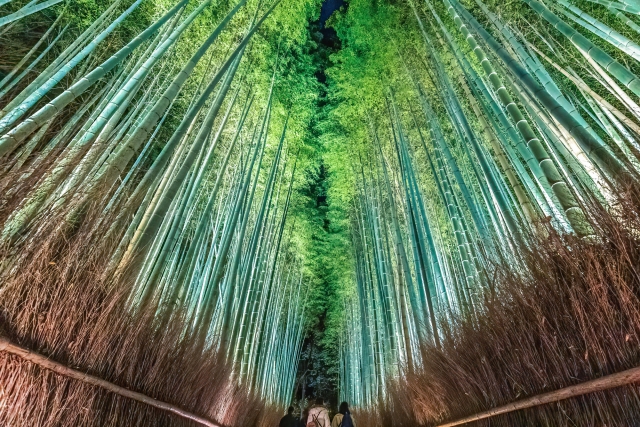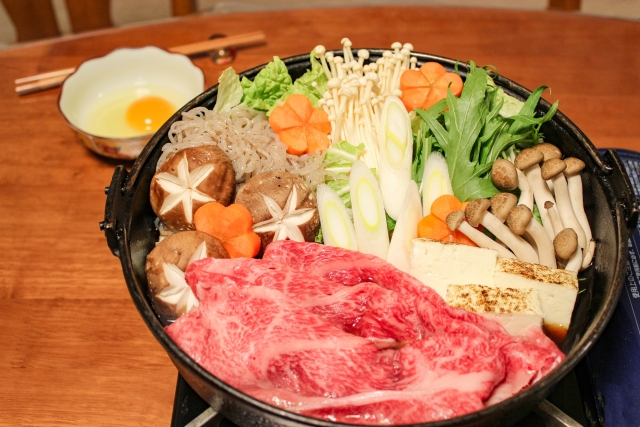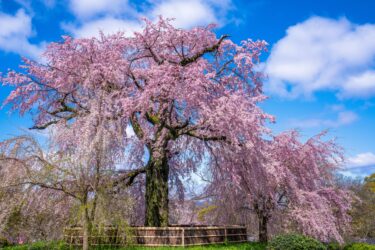Step into a tranquil winter wonderland in Kyoto, where the city’s ancient charm is heightened by the ethereal beauty of the chilly season. As the vibrant fall foliage gives way to delicate snowfall, Kyoto transforms into a serene and mystical destination, inviting you to embrace the magic of winter. From the iconic temples adorned with glistening snow to the soothing hot springs nestled in the picturesque mountains, Kyoto offers a captivating experience for discerning travelers seeking a peaceful escape.
Weather and Climate in Kyoto during Winter
Kyoto experiences a cold and relatively dry winter, with temperatures ranging from 0°C to 10°C. Snowfall is unusual in the city itself, outside of its northernmost parts, so it’s a very special experience when the snow does fall, and when it stays, creating a picturesque landscape on some temples and streets. It’s an ideal time to explore the city’s timeless beauty without the crowds that flock during other seasons. The quiet charm of Kyoto’s winter is truly a captivating experience for those seeking a peaceful and introspective escape from the hustle and bustle of everyday life, or indeed, the city during high season.

The serene winter weather in Kyoto also offers a unique opportunity to witness the city’s landmarks draped in a blanket of snow. The iconic Kinkaku-ji (Golden Pavilion) and Ginkaku-ji (Silver Pavilion) temples, along with the enchanting Arashiyama Bamboo Grove, take on a surreal and magical quality when dusted with snow, creating a breathtaking sight that is sure to leave a lasting impression on visitors.
Winter Events in Kyoto
Despite the colder temperatures, Kyoto has some vibrant winter events. One of the most anticipated events is the Arashiyama Hanatouro, held in mid-December, a mesmerizing display of illuminated bamboo groves and temples, creating a mystical atmosphere that transports visitors to a world of ethereal beauty. The soft glow of the lanterns against the snowy backdrop adds a touch of enchantment to the winter nights, offering a truly magical experience for all who attend.


Another highlight of Kyoto’s winter calendar is the Joya-no-Kane, or temple bell ringing that marks the transition into the New Year. As the final moments of the year unfold, locals and visitors alike gather at temples such as Chion-in, Kiyomizu-dera, and Kennin-ji to partake in this spiritual ceremony. The resonating tolls, precisely 108 in number, symbolize the 108 worldly desires in Buddhism and are believed to cleanse the soul from these earthly attachments, paving the way for a fresh start. The air is filled with a palpable sense of anticipation and reflection, creating a serene atmosphere amidst the wintry chill.
Exploring Kyoto’s Winter Landscapes
Kyoto’s winter landscapes are a sight to behold, with the snow-capped mountains and serene countryside adding a touch of tranquility to the city’s already picturesque surroundings. The nearby Hozugawa River offers a scenic winter boat ride that allows visitors to admire the stunning winter scenery from a unique perspective, with the snow-dusted banks and ancient forests creating a mesmerizing backdrop for a leisurely cruise. The peaceful ambiance of the river journey provides a serene escape from the city’s hustle, allowing travelers to bask in the natural beauty of Kyoto’s winter landscapes.

For those seeking a more immersive experience, a visit to the charming areas of Kibune and Kurama, just north of the city, offers the opportunity for a winter hike through the snow-kissed mountains. The tranquil ambiance of the snow-covered trails, coupled with the soothing sounds of nature, creates a serene and introspective atmosphere that is perfect for those looking to connect with Kyoto’s natural beauty. If you’re lucky enough to catch it during a snowfall, too, the sight of Kifune Shrine in the snow, with its red lantern posts, is one to behold.
Winter Cuisine in Kyoto

Kyoto’s winter cuisine is a delectable reflection of the season’s bounty, offering a delightful array of seasonal delicacies that warm the soul and tantalize the taste buds. From comforting hot pots and hearty stews to delicate wagashi (traditional Japanese sweets), the winter culinary scene in Kyoto embraces the essence of the season, infusing each dish with a touch of warmth and nostalgia. The city’s renowned kaiseki ryori, a multi-course dining experience that showcases the finest seasonal ingredients, takes on a special charm during the winter months, with chefs artfully crafting dishes that celebrate the flavors and textures of the season.

One of the most beloved winter delicacies in Kyoto is nabe, a traditional hotpot dish that can be made with a variety of different types of soups, and different ingredients, including sliced meat, veggies, mushrooms, and tofu. As the temperature drops, people come together over these steaming pots filled with seasonal ingredients to share some food and some company. Additionally, the city’s bustling Nishiki Market comes alive with an abundance of seasonal produce and specialty items, providing visitors with the perfect opportunity to sample the diverse flavors of winter in Kyoto.
For those with a sweet tooth, Kyoto’s winter confections offer a delightful array of treats that celebrate the season’s abundance. From intricately crafted wagashi that mimic the delicate beauty of snowflakes to indulgent matcha-infused desserts, the winter sweets of Kyoto perfectly complement the city’s serene ambiance. Whether savoring a steaming bowl of hot udon noodles or indulging in a fragrant cup of hojicha (roasted green tea), Kyoto’s winter cuisine is a celebration of flavors and traditions that captivate the senses and warm the heart–and hopefully the body, too!
Tips for Traveling to Kyoto in Winter
Traveling to Kyoto in winter offers a unique and enchanting experience, but it’s essential to be prepared for the colder temperatures and occasional snowfall. Here are some tips to ensure a memorable and comfortable winter trip to this magical destination:
1. Dress in layers: The winter weather in Kyoto can fluctuate, so packing layers allows for easy adjustment to changing temperatures throughout the day.
2. Footwear: Comfortable and warm footwear is essential for exploring Kyoto’s winter landscapes, especially if you plan to partake in outdoor activities or scenic walks.
3. Winter accessories: Don’t forget to pack a cozy scarf, gloves, and a hat to stay warm and comfortable while exploring the city’s enchanting winter wonders.
4. Enjoy hot springs: If you travel a bit outside of the city to area’s like Kameoka’s Yu no Hana Onsen, you’ll find a variety of soothing hot springs, known as onsen, where visitors can unwind and relax amidst the winter scenery. Don’t miss the opportunity to indulge in this quintessential winter experience.
5. Winter events: Research and plan your visit to coincide with Kyoto’s winter events to immerse yourself in the city’s vibrant cultural traditions and seasonal celebrations.
6. Culinary delights: Embrace the winter cuisine of Kyoto by sampling traditional winter dishes and seasonal treats at local restaurants and markets, adding a flavorful dimension to your winter journey.
By following these tips and embracing the enchanting winter ambiance of Kyoto, you’re sure to create some great memories and experience the city’s serene magic in a truly immersive way.








